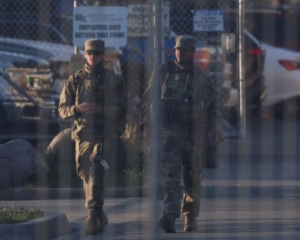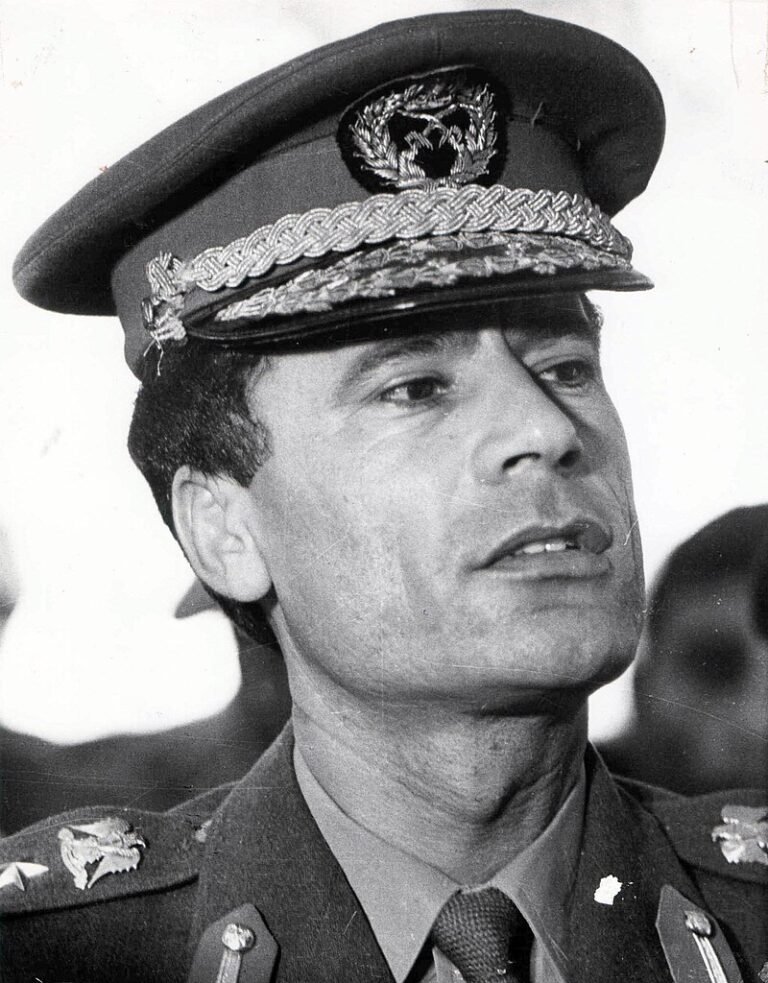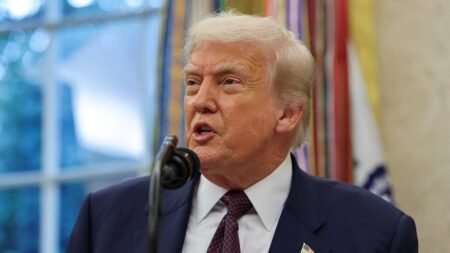Muammar Gaddafi was a Libyan revolutionary and political leader who ruled Libya for over four decades. Born in 1942 in a Bedouin tent near Sirte, Libya, Gaddafi came from the Qadhadhfa tribe. After studying at the Royal Military Academy in Benghazi, he rose quickly through the military ranks. In 1969, Gaddafi led a bloodless coup that overthrew King Idris I, ending the monarchy and establishing a republic with himself as the leader. His rule began a new era for Libya, one defined by radical political ideas and ambitious social programs.
Gaddafi developed a unique political philosophy expressed in his Green Book, which combined Arab nationalism, socialism, and Islamic beliefs. He established the Libyan Arab Jamahiriya, meaning “state of the masses,” promoting direct democracy through local committees rather than Western-style representative governments. Despite this ideal, his leadership was authoritarian, and opposition was not tolerated. Yet, Gaddafi sought to use Libya’s oil wealth to improve the lives of his people, creating free healthcare, education, housing, and subsidized food programs. Under his rule, Libya made significant progress in literacy rates, healthcare access, and life expectancy.
On the domestic front, Gaddafi worked hard to modernize Libya and reduce tribal divisions. He aimed to build a society where basic needs were met by the state, which was rare in the region at the time. His government nationalized the oil industry and used revenues to fund large-scale infrastructure projects. Many Libyans benefited from the free services and social welfare programs, which were part of Gaddafi’s vision for a prosperous Libya independent of foreign influence.
Internationally, Gaddafi was known for his strong stance against Western powers, especially the United States and the United Kingdom. He sought to unite Arab and African nations under a common cause against colonialism and imperialism. He supported the creation of the African Union and provided funding and ideas to help African countries gain more independence from foreign control. His pan-African and pan-Arab ambitions made him a powerful figure in the region. However, his support for various militant groups and revolutionary movements around the world brought him into conflict with many Western countries.
The relationship between Libya and the West was tense for much of Gaddafi’s rule. The United States bombed Libya in 1986 in retaliation for suspected involvement in terrorist attacks. This strike targeted Gaddafi’s compound and resulted in the death of his adopted daughter. The event marked a low point in U.S.-Libyan relations and deepened Gaddafi’s distrust of the West. Libya faced international sanctions during the 1990s due to its alleged role in terrorist activities, including the Lockerbie bombing. However, in the early 2000s, Gaddafi made efforts to improve relations by renouncing weapons of mass destruction and compensating victims of terrorism.
The Arab Spring protests of 2011 brought widespread unrest to Libya. Inspired by uprisings across the Middle East and North Africa, Libyans rose against Gaddafi’s long rule. What started as protests soon escalated into a civil war. Rebel groups fought Gaddafi’s forces while NATO intervened militarily under a United Nations mandate to protect civilians. The international intervention played a key role in weakening Gaddafi’s grip on power. On October 20, 2011, Gaddafi was captured and killed in his hometown of Sirte, ending his 42-year reign.
Muammar Gaddafi’s legacy remains deeply divided. Many remember him for his efforts to provide social services and fight Western imperialism. Others condemn his authoritarian rule, human rights abuses, and support for terrorism. Since his death, Libya has faced political fragmentation and ongoing conflict, struggling to find stability. Gaddafi’s vision of a united Africa and Arab world lives on in some respects, but his methods and governance have left a complex and controversial mark on Libyan and world history.







